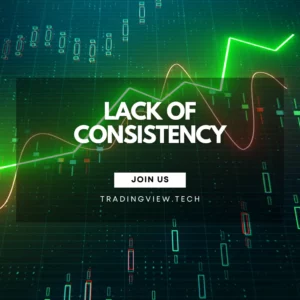A well‑built macro calendar is your trading radar: it tells you what is coming, when it will hit, and how hard it is likely to shake the market. Treat it as a living document that evolves every week.
Compile a master list of high‑impact releases
Start with the “big six” global data points—CPI, PPI, GDP, employment, PMI/ISM surveys, and central‑bank rate decisions/pressers—because they reliably move currency pairs, index futures, Treasuries, and most liquid commodities. Layer on country‑specific catalysts for the markets you trade:
- Energy traders add U.S. EIA crude‑inventory, OPEC‑JMMC statements.
- Equity traders add quarterly EPS seasons, ex‑dividend dates, sector‑specific reports (e.g., semiconductor billings, auto sales).
- Crypto traders add macro‑sensitive risk events (Fed minutes, U.S. payrolls) plus on‑chain unlock schedules and major protocol forks.
1.2 Roll it forward—never let the window close
Use spreadsheet software, a calendar API (Google, Outlook), or specialised dashboards (Trading Economics, Econoday). Automate → Every Friday, pull the next eight weeks of events via API or CSV; push to your calendar with programmable color‑coding. This two‑month runway prevents “blind‑corner” surprises like an emergency ECB gathering dropped three weeks ahead.
1.3 Tag each event with three attributes
| Attribute | Why it matters | Example tag |
| Jurisdiction | Markets discount local risk differently. | 🇺🇸, 🇯🇵, 🌍 (global) |
| Asset‑class sensitivity | Helps you decide which positions need hedging. | FX, Rates, Equities, Energy |
| Consensus vs. uncertainty | Wider forecast ranges signal bigger gap risk. | Tight / Medium / Wild |
1.4 Assign a volatility score
Borrow from options‑market convention: “1 star” (low), “2 stars” (medium), “3 stars” (high), “4 stars” (critical). Base it on:
- Historical move: average 30‑minute ATR post‑release.
- Implied vol: compare front‑dated option IV to 30‑day mean.
- Contextual pressure: Is the Fed “data‑dependent”? Is inflation re‑accelerating? If the answer is “yes,” bump the star count.
1.5 Set layered alerts
- T‑24 h email digest for planning.
- T‑60 min push + screen flash to stop you initiating fresh trades too close.
- T‑5 min auditory alert if you are at the desk—your cue to verify orders, tighten stops, or temporarily disable algos.
1.6 Throttle risk proactively
For events tagged ★★★★, down‑shift position sizing to half or even flat, unless you are explicitly running a volatility capture strategy (e.g., straddle). For ★★ and ★★★, shrink leverage, widen stops, and pre‑define “kill‑switch” levels in case slippage exceeds modeled worst‑case.
1.7 Post‑event journaling
Log actual vs. consensus, immediate market reaction, slippage vs. expected. Over time you’ll build a proprietary database revealing that, say, Canadian retail sales (non‑core) rarely moves USD/CAD more than 20 pips, freeing you to hold positions through it, while non‑farm payroll surprises > 100 k routinely blow out S&P futures by 1% in ten minutes—yielding rules for future throttle settings.
2 Link Fundamentals to Technical Setups
Technical patterns tell you where price wants to go; fundamentals tell you why it might get there (or fail). Marrying the two transforms chart patterns from probabilistic to high‑conviction plays.
2.1 Pre‑trade fundamental sanity check
Before clicking “Buy” on that textbook inverse head‑and‑shoulders, run a five‑step interrogation:
- Upcoming macro landmines? — Look 72 hours out on your macro calendar; if CPI is due tomorrow at 8:30 EST, either defer the entry or size down.
- Earnings risk? — For equities, confirm the company’s reporting date and those of key suppliers/customers. A bullish flag in $TSLA is fragile a day before its battery supplier posts results.
- Sentiment extremes? — Check CFTC COT positioning, AAII bull‑bear spread, or crypto funding rates. If longs are already overcrowded, a “perfect” ascending triangle may morph into a bull trap.
- Policy drift? — Scan recent speeches/minutes: if the RBA just pivoted hawkish, an AUD/USD bearish wedge loses edge.
- Cross‑asset confirmation? — Is sector ETF breadth or inter‑market ratios (e.g., Copper/Gold) validating your view? Divergence is a red flag.
2.2 Favor confluence, not coincidence
When fundamentals support the chart, conviction multiplies. Example:
Chart: EUR/USD breaks above a six‑month descending trendline on rising RSI.
Fundamental tailwind: Eurozone core CPI surprises +0.4 pp above forecast, while the Fed signals a pause.
Action: Enter long on the retest of the broken trendline with half‑ATR stop; scale out into next resistance. Probability of follow‑through is materially higher than a pure technical break.
2.3 Quantify alignment with a scoring matrix
Create a 0‑to‑5 scale:
| Factor | Score 0 | Score 1 | Score 2 |
| Macro trend | Opposite | Neutral | Supportive |
| Earnings momentum | Negative | Flat | Positive |
| Sentiment | Euphoric | Balanced | Fearful |
| Liquidity flow | Outflows | Mixed | Inflows |
| Total ≥ 7/10 → green‑light trade; 4–6 → half‑size; ≤ 3 → pass. |
2.4 Embed in your trading checklist/platform
If you use TradingView or Thinkorswim, create custom fields (“Econ Risk,” “Fundamental Score”) that must be toggled green before the order ticket activates. This hard‑codes discipline, eliminating emotional overrides.
2.5 Post‑trade forensic review
Separate journal columns for technical pattern quality vs. fundamental alignment. After 50 trades you’ll see whether, for instance, pennants backed by positive revisions in GDP forecasts yield +1.2 R on average versus +0.4 R for pennants alone. Iterate weighting accordingly.
2.6 Evolve with the cycle
Fundamental drivers rotate: in 2020‑21, pandemic policy and vaccine news drove price; in 2022‑23, inflation prints and rate path dominated; in 2024‑25, supply‑chain reshoring and AI capex may matter more. Update your confluence checklist every quarter to reflect the current price drivers, ensuring your technical signals remain fundamentally anchored.
Create a Tiered Watchlist
A tiered watchlist is your tactical heat‑map: it tells you where to focus limited screen time and capital by ranking tradable assets according to the immediacy and magnitude of their fundamental catalysts. Think of Tier 1 as the front line, Tier 2 as the staging area, and Tier 3 as the reserves you call on when the macro noise subsides.
3.1 Data inputs & infrastructure
- Symbol universe – Start broad (e.g., S&P 500 components, G‑10 FX pairs, top‑100 crypto tokens) before pruning with liquidity filters.
- Catalyst scraper – Use calendar APIs (Refinitiv, MacroBond, Trading Economics) plus earnings‑feed parsers to pull upcoming events into a SQL/SQLite DB.
- Tagging engine – Write a Python script (or use no‑code automation like Zapier) that cross‑references each asset with its next scheduled catalyst, assigns a tier, and pushes the result to your charting platform via webhook.
3.2 Tier 1 – “Fuse is lit” assets
Definition: Instruments facing a binary, high‑volatility event inside 7 trading days.
Examples:
- USD/JPY two days before a BoJ rate‑decision rumored to end YCC.
- NVDA the morning of Q2 earnings with whisper numbers 10 % above consensus.
- Brent futures ahead of an unscheduled OPEC+ JMMC amid supply deficit chatter.
Playbook:
- Pre‑position or stand aside – either run option structures (straddles, butterflies) designed for explosive moves or flatten directional bets if edge is unclear.
- Tighten process cadence – intraday charting drops from 15‑minute to 1‑minute bars; voice squawk on; newsfeed latency monitoring active.
- Contingency orders – use OCO brackets with limit‑if‑touched entries in case of post‑event gaps.
3.3 Tier 2 – Thematic swing candidates
Definition: Assets with catalysts 1‑8 weeks out or under slow‑burn secular themes. Volatility is lower than Tier 1 but trends can be persistent.
Examples:
- Mexican equities during a multi‑month near‑shoring boom as U.S. firms relocate supply chains.
- Wheat futures in the 30‑day window after USDA hints at acreage reduction.
- EUR/CHF during an ECB‑SNB policy divergence phase projected by rate‑futures curves.
Playbook:
- Trend‑follow with partial fundamental bias – use daily‑hourly chart confluence, pyramiding positions when the story strengthens.
- Calendar‑spread options – exploit theta decay while capturing the expected move into the catalyst window.
- Dynamic tiering – promote names to Tier 1 as the D‑day approaches or demote to Tier 3 if the theme fizzles.
3.4 Tier 3 – Pure technical canvases
Definition: Instruments with no scheduled high‑impact event in the next two months and muted news flow; ideal laboratories to stress‑test indicators without macro noise.
Examples:
- Gold‑mining junior with distant earnings and scant analyst coverage.
- NZD/CAD in a data‑light fortnight between dairy auctions and BoC meetings.
- Low‑cap DeFi token where on‑chain unlocks are six months away.
Playbook:
- Algorithm development – deploy beta versions of systematic strategies (mean reversion, breakout) to judge signal clarity.
- Leverage modestly – absence of catalyst reduces gap risk, enabling tighter stops and sharper RR ratios.
- Liquidity vigilance – thin order books can still ambush; keep slippage logs.
3.5 Visualization & review
Present the tiers in a kanban board or color‑coded watchlist: red = Tier 1, amber = Tier 2, green = Tier 3. Conduct a Sunday night audit: update catalyst dates, escalate or demote names, and sync across desktop/mobile so focus is laser‑sharp every Monday open.
4 Quantify Fundamental Impact
Knowing that payrolls matter is obvious; knowing how much a 50‑k beat on NFP typically moves E‑mini futures is where edge lives. Quantification converts vague intuition into statistically defensible trade parameters.
4.1 Build the event‑reaction database
- Schema design – For each event record: asset, event_type, release_timestamp, consensus, actual, surprise (actual − consensus), ΔP_t+5m, ΔP_t+30m, intraday_high_low, vol_spike%.
- Data ingestion – Pull intraday OHLCV data via broker API (Interactive Brokers, Binance) at 1‑minute granularity; merge with economic releases scraped earlier.
- Normalization – Express price reactions in ATR multiples to standardize across instruments; log‑transform surprises (% of consensus) to handle skew.
4.2 Analyze response curves
- Scatter plots – Surprise vs. 5‑minute ATR move uncovers linear vs. convex sensitivity.
- Bucket studies – Group surprises into quintiles; compute average and 95 % range of price change to model expected slippage.
- Decay mapping – Measure how quickly volatility mean‑reverts (e.g., 50 % of shock absorbed within 90 minutes for CPI; 180 minutes for FOMC).
4.3 Derive actionable metrics
| Metric | Use‑case | Example finding |
| Impact Factor (IF) = Avg | ΔP_30m | / ATR |
| Shock Elasticity (SE) = σ(ΔP)/σ(Surprise) | Gauge convexity | GDP has low SE → reactions proportional; CPI high SE → tail‑risk |
| Fade Half‑Life | Plan reversion trades | Oil inventory shocks fade in 45 min; exploit mean‑reversion |
4.4 Integrate into risk model
- Stop‑loss algorithm – Stop = k × IF × ATR, where k adjusts for tier (higher for Tier 1).
- Profit‑target grid – Use percentile of historical positive moves to set staggered exits (e.g., 50th, 70th, 90th percentiles).
- Position throttling – Multiply base size by (1 / √IF) to auto‑downshift on events with historically violent swings.
4.5 Feedback loop & refinement
Schedule a monthly cron job to update the database with fresh releases, re‑compute metrics, and output a HTML dashboard. During quarterly review, purge stale event types (e.g., ISM Manufacturing loses market punch during recession) and add emerging ones (chip export restrictions). Over time, your numbers will reveal that Eurozone flash CPI has eclipsed German ZEW as the euro’s primary impulse, letting you allocate precious risk capital where it truly pays.
Blend Signals into a Trade Checklist
A checklist is the cockpit pre‑flight of trading: it compresses complex decision‑making into a sequence of binary gates that either unlock or abort the order ticket. By hard‑coding “fundamental alignment” beside technical and risk metrics, you ensure that each position is justified by both what the chart says and why the market should care.
5.1 Architecture of a dual‑lens checklist
| Gate # | Category | Question | Pass Criteria | Abort / Adjust |
| 1 | Trend Context | Is the higher‑time‑frame trend clear? | Daily/weekly MA slope unanimous | Trade smaller or fade |
| 2 | Pattern Integrity | Is the setup textbook or stretched? | Pattern forms within prior 30 bars; no wicks violating trigger | Wait for cleaner structure |
| 3 | Risk‑Reward (RR) | Is min RR ≥ 2:1 after slippage? | TP at next liquidity pocket ; SL at invalidation | Skip |
| 4 | Liquidity | Is average depth ≥ X units? | 5× projected size inside 5‑tick spread | Split order / use limits |
| 5 | Fundamental Alignment | Does at least one macro or micro driver endorse the direction? | Catalyst bias, data trend, or sentiment supports | Size × 0.5 or pass |
| 6 | Event‑Risk Filter | Is there a high‑impact release inside holding window? | No ★★★★ events, or hedged | Delay / hedge |
| 7 | Mental State | Am I rested & following plan? | Self‑check score ≥ 7/10 | Stop trading |
5.2 Operationalizing Gate 5—Fundamental Alignment
- Directional Catalyst – e.g., bullish copper chart + China stimulus rumors.
- Macro Flow Confirmation – ETF fund flows show net inflows; CFTC COT adds longs.
- Relative‑Value Edge – Pair‑trade long sector leader vs. laggard backed by earnings momentum spread.
- Sentiment Divergence – Fearful news tone while price holds support → contrarian long.
If none apply, trade is demoted to Tier 3 logic: size < 0.5 %, tighter stop, quick scalp only.
5.3 Embedding in your platform
- Custom order template (MT4/5, cTrader) – Disable the “Send” button until all checklist radio buttons read green.
- Scripting – Python/JS script pulls latest catalyst tags and auto‑populates Gate 5 verdict.
- Voice confirmation – Use text‑to‑speech macro: “Checklist complete—permission to execute.”
5.4 Psychological benefit
Binary gates eliminate narrative rationalization. Either the fundamental checkbox is ticked or the trade is shelved—reducing FOMO chases and revenge trades born of pure technical triggers.
6 Review & Iterate Monthly
A checklist is only as strong as its hit‑rate; a monthly post‑mortem turns anecdotal belief into quantified improvement.
6.1 Data extraction workflow
- Export trade log – Broker CSV or automated journal (Edgewonk, TraderVue).
- Tag columns – has_fund_alignment (Y/N), event_risk_level (0‑4★), setup_type, P/L_R, drawdown%.
- Import to analysis notebook – Run pandas scripts to segment performance.
6.2 Key diagnostics
| Metric | Formula | Interpretation |
| Hit‑Rate Δ | Win% (aligned) − Win% (unaligned) | Positive gap validates Gate 5 |
| Mean R Δ | Avg R (aligned) − Avg R (unaligned) | Higher = fundamentals lift reward |
| Volatility‑Adjusted Return | ΣR / σ(R) for each cohort | Sharpe‑style clarity |
| Event‑Day Slippage | Avg slip on ★★★★ days vs. normal | Guides future stop padding |
6.3 Decision matrix refinement
- Promote data points whose inclusion raises Hit‑Rate Δ > 10 % for three months (e.g., option‑market skew).
- Demote or delete metrics with negligible or negative edge (e.g., ZEW sentiment if correlation decays).
- Re‑weight checklist: increase Gate 5 importance by requiring two confirming fundamentals if alignment trades outperform ≥ 1.5 R vs. baseline.
6.4 Feedback rituals
- First trading day each month—host a solo “board meeting.” Present metrics, voice‑record insights, outline tweaks.
- Update SOP doc—version‑control your checklist in Notion/Git; archive prior versions for audit trail.
- Accountability loop—share summary with a peer group or mentor to avoid bias.
6.5 Compounding edge over time
After 6–12 iterations, you’ll possess a bespoke, data‑driven playbook attuned to your markets and psyche. The process not only sharpens trade selection; it inoculates you against regime change by continuously stress‑testing which fundamentals still matter—turning the dreaded “unknown unknowns” into known variables you either embrace or sidestep.



